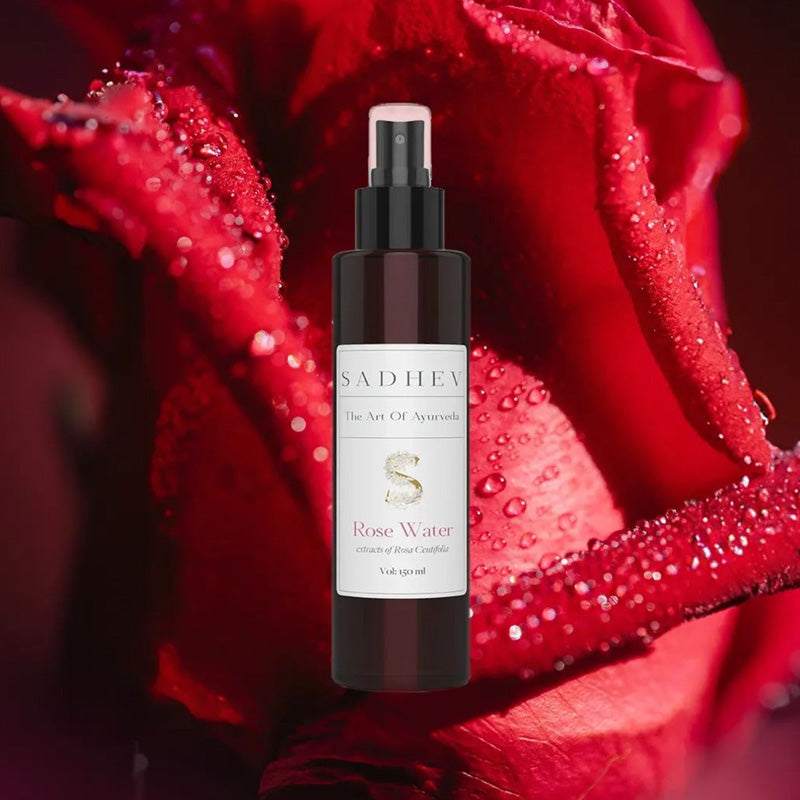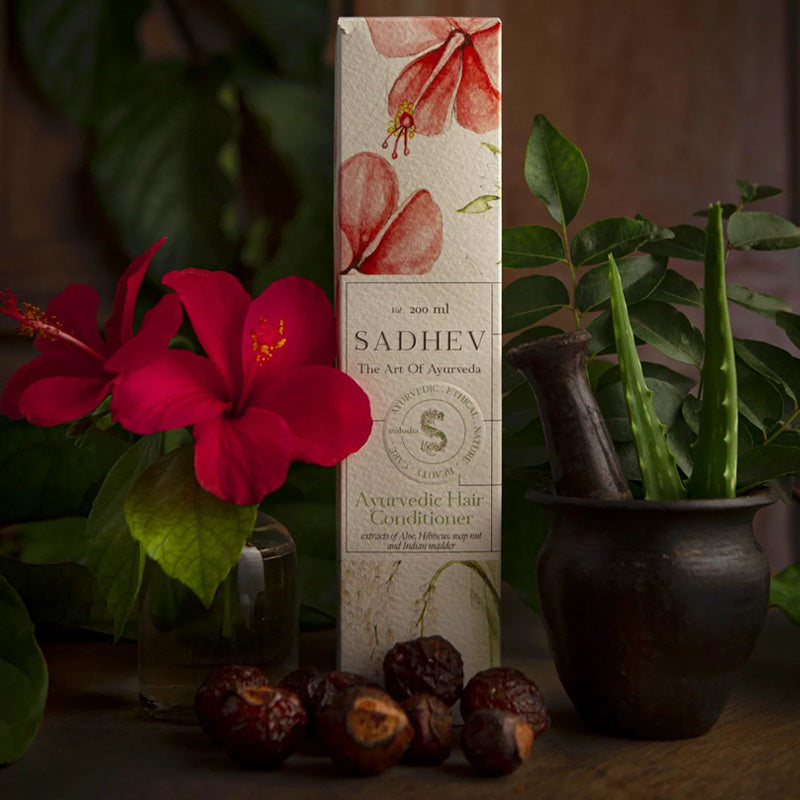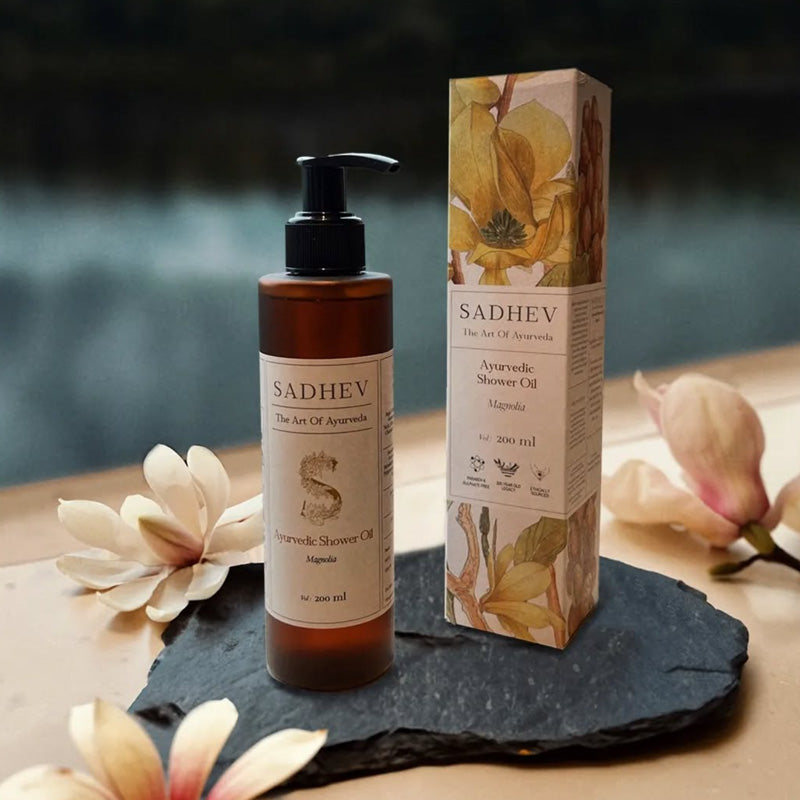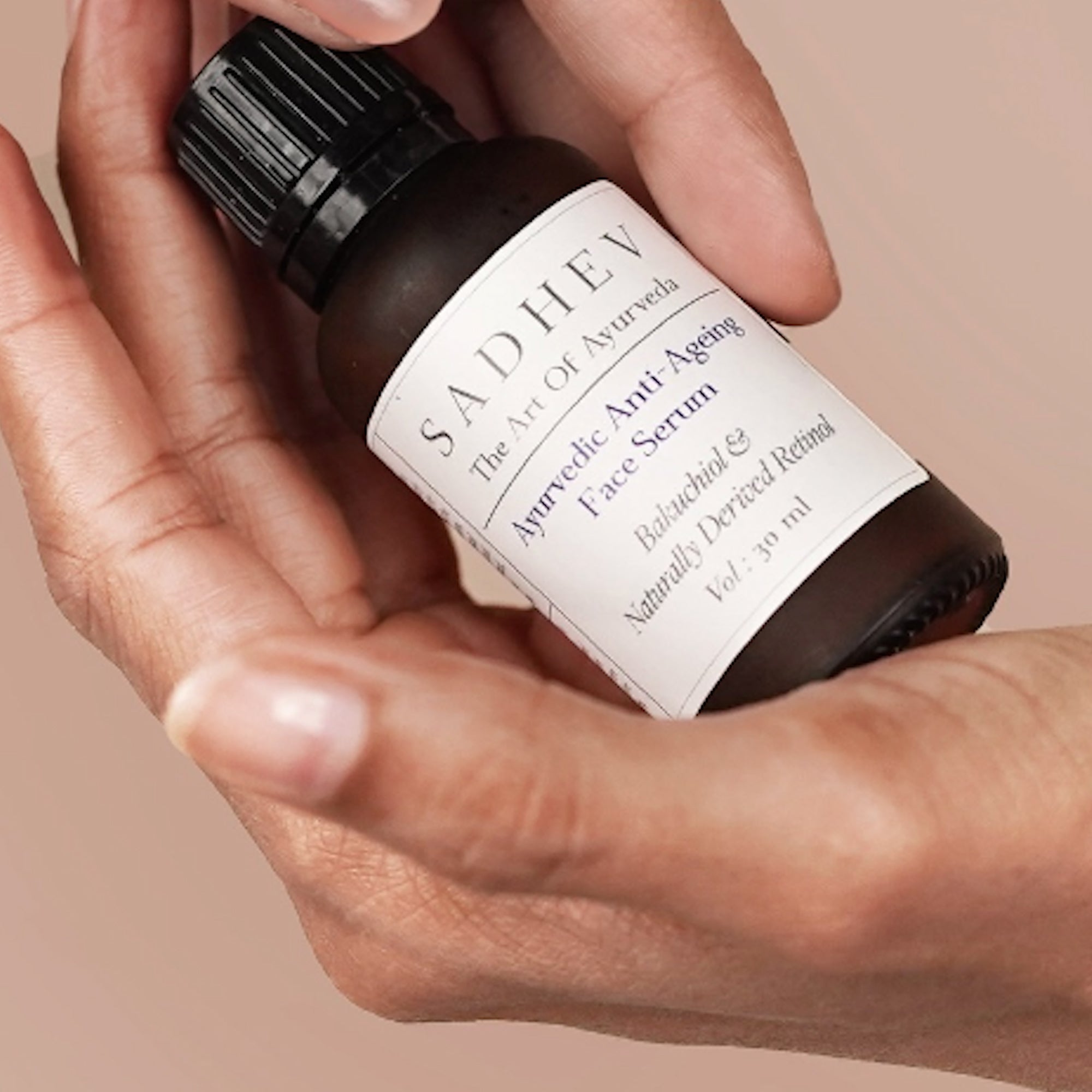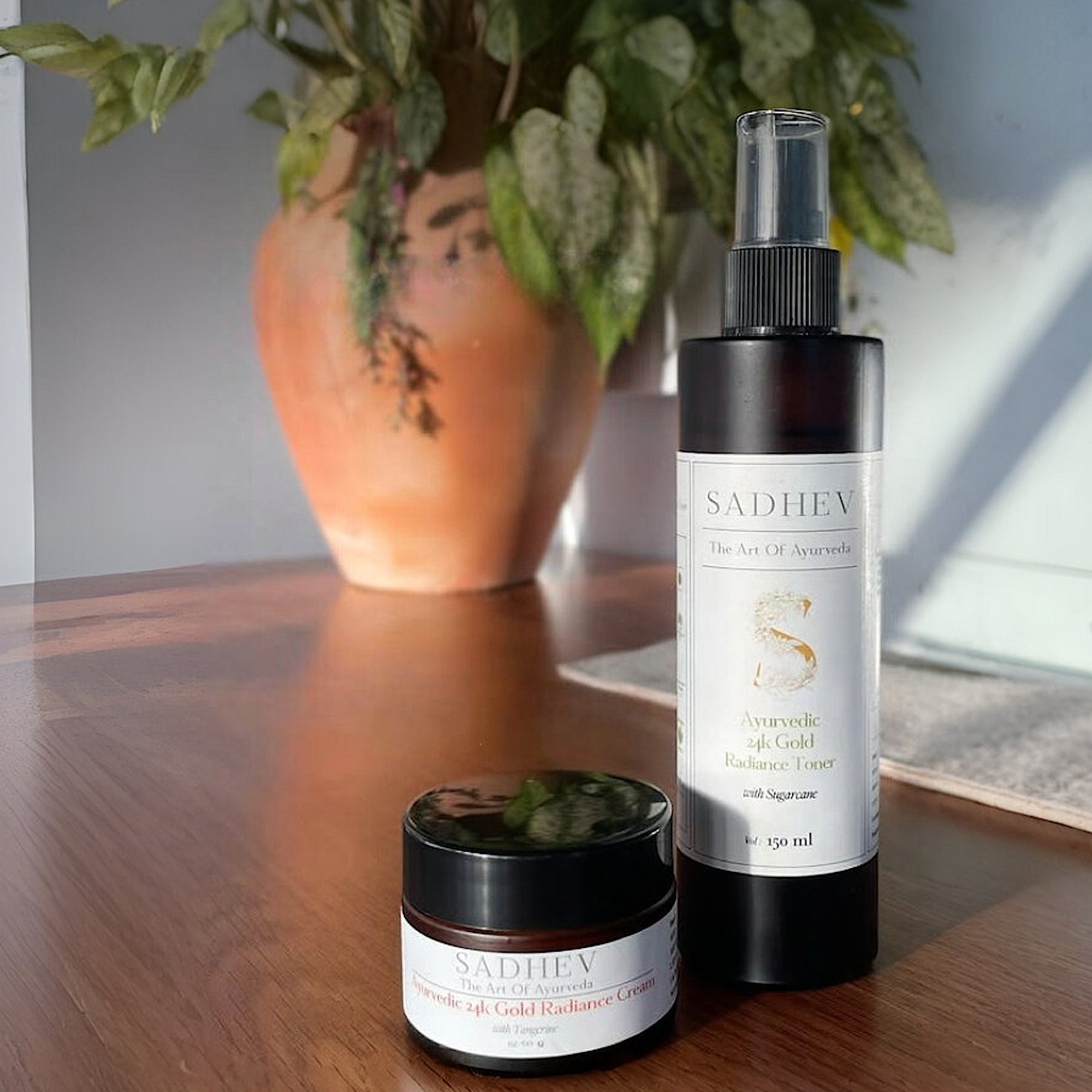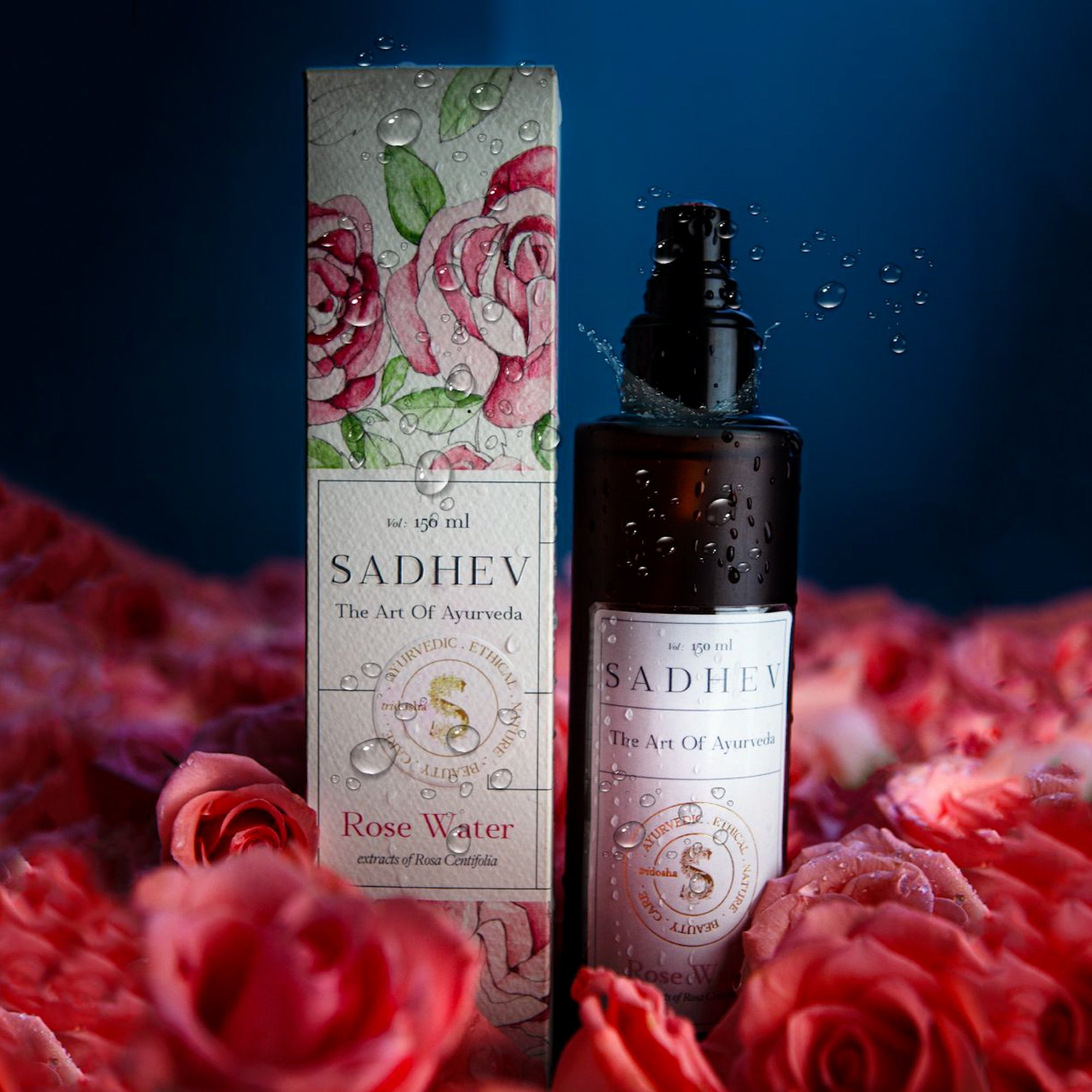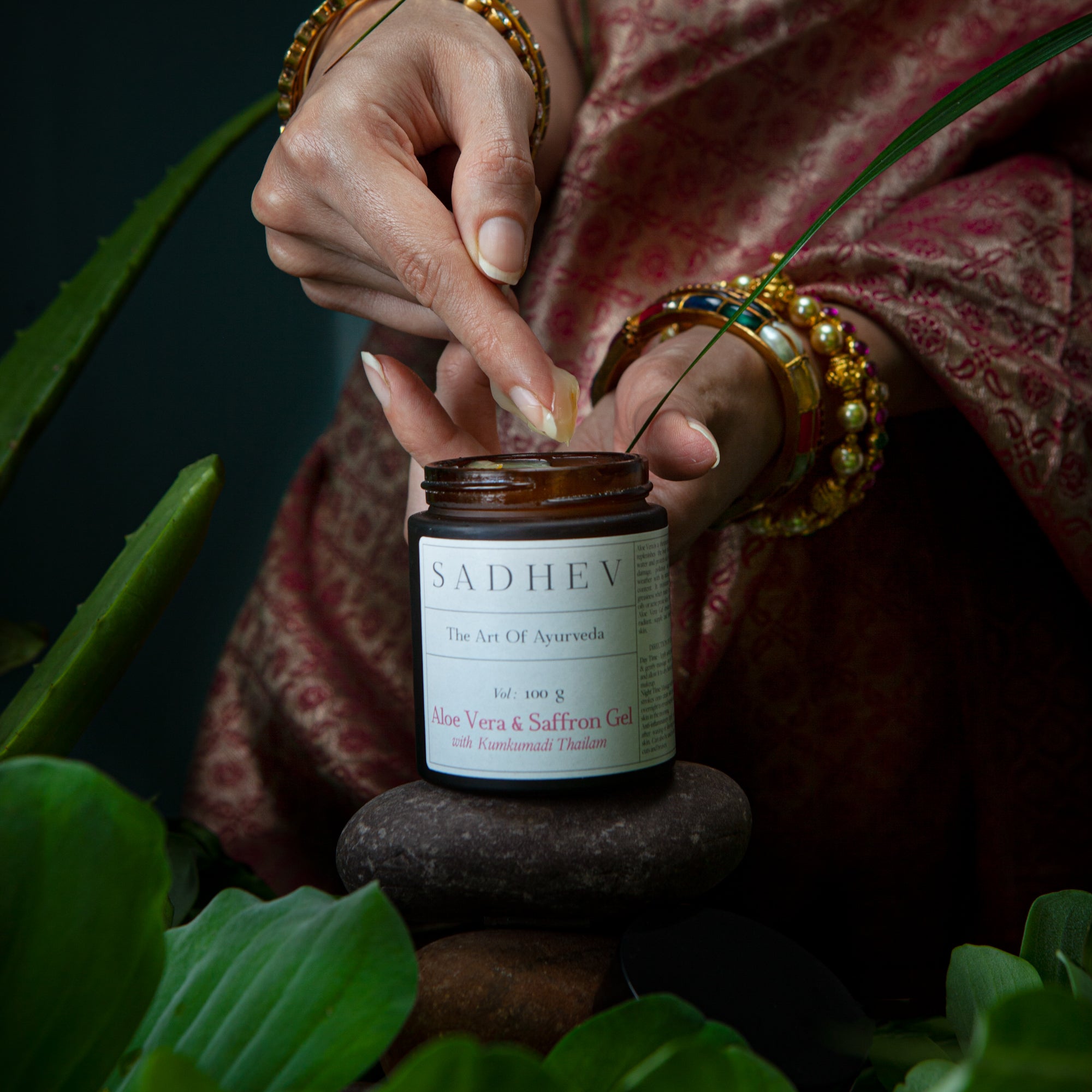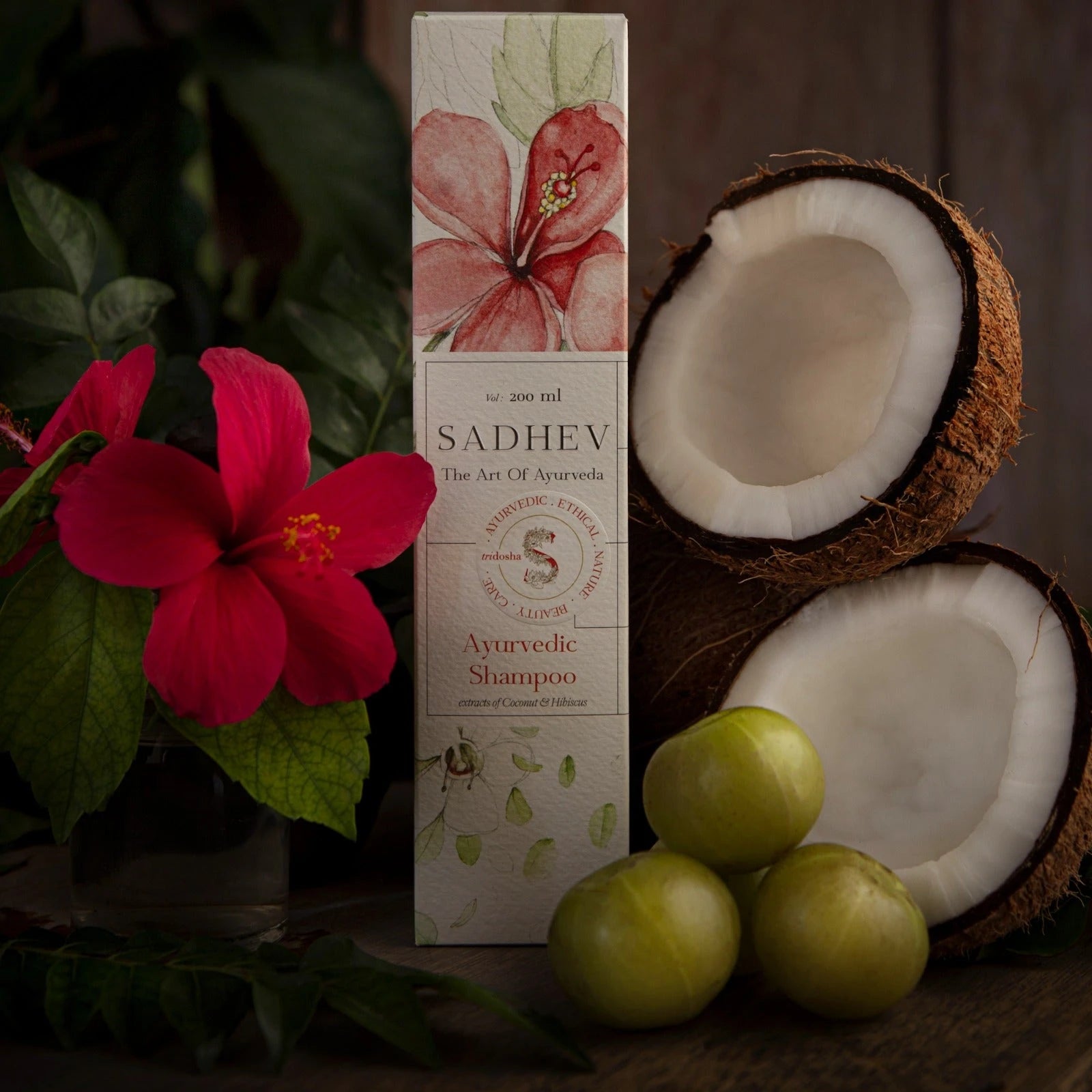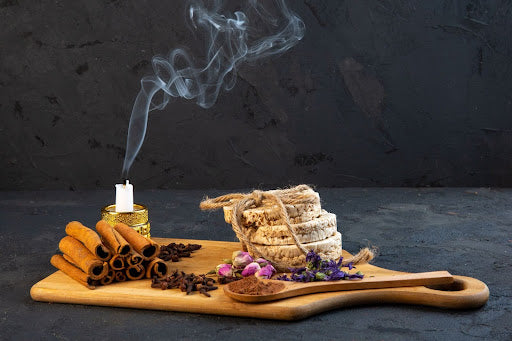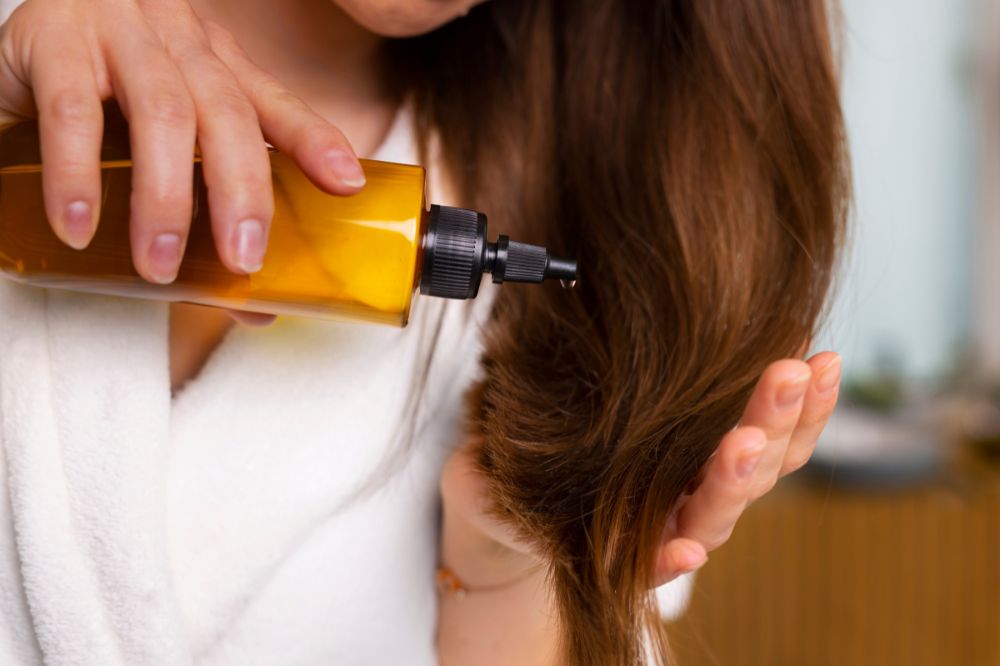As the name suggests, Sandalwood is a special type of wood that is derived from Sandal trees. What sets this aromatic wood apart from any other fragrant wood out there is the fact that Sandalwood can retain its aroma for decades.
Sandalwood Is known as Chandan in Sanskrit and chandan powder is a sacred and highly revered Ayurvedic herb. It has been used for beauty and medicinal purposes for centuries. In fact, Chandan has a lot of spiritual and religious significance attributed to it as well. That’s why it is a common fragrance used in temples and monasteries. There are several benefits of chandan powder for our skin and health as well.
What Is Sandalwood?
Sandalwood is an aromatic wood known for its numerous benefits for skin, mental health, and medicinal value. It is extracted from the Sandal tree Santalum album (Indian sandalwood). Its distinctive, warm, and soothing fragrance makes it beneficial in aromatherapy, while its essential oil has several skin benefits.
Importance Of Sandalwood In Ayurveda
Apart from its usage in holy incense sticks, sandalwood is gifted with antioxidant, anti-ageing and anti-microbial properties, (1) making it an excellent cure for Pitta and Vata skin issues such as acne, rashes, ulcers, sunburn, dryness, and more. This is because, according to Ayurveda, the majority of our skin and health problems are a consequence of dosha imbalance. When we know the right sandalwood uses for skin, it balances our Pitta and Vata doshas to effectively address and alleviate respective skin issues. If you wish to know about the wonderful benefits of Sandalwood for skin and the right way to include it in your daily beauty routine, keep reading.
Other Names of Sandalwood
Sandalwood is also known as Chandana in Sanskrit. Here are some of the most popular names of sandalwood in the world:
- Valgaka in Oriya
- Agarugandha, Bavanna, Chandala, Bhadrasri, and Kasturi in Kannada
- Chandanam, Chandana-mutti in Malayalam
- Kuwai in Malay
- Anukkam, Asam, and Sandhanam in Tamil
- Gandhachakoda in Marathi
- Sandalo in Italian
- Santal in French
- Shandar in Persian
- Sandal and Safaid in Urdu
Different countries and cultures have different names for Sandalwood as well.
- In Thailand, it is called Sapan.
- Cendana in Indonesia
- Chandanaya in Sri Lanka
- Sandlehout in South Africa
- Byakudan in Japan
- Kayu Cendana in Malaysia
Types Of Sandalwood
While we’ve rounded up the benefits of sandalwood for skin below, we are ready to shed light on the many species of sandalwood that are found in Hawaii, Sri Lanka, Pakistan, India, Indonesia and Australia. There are nearly 15 types of sandalwood known to humankind.
The most popular ones among them are:
- Australian Sandalwood
- Santalum Freycinetianum
- Santalum acuminatum
- Santalum Ellipticum
- Indian Sandalwood
- Santalum Haleakalae
- Santalum Autstrocaledonicum
It’s the alpha-santol in sandalwood that makes it so highly therapeutic for skin. While it’s not sure whether all the species of sandalwood contain it, the Indian sandalwood oil contains one of the highest amounts of alpha and beta-santalol that makes this species more in demand in the international market.
5 Amazing sandalwood powder benefits for skin
We have put together a list of some amazing benefits of Sandalwood for skin. We are sure that these benefits bring sandalwood uses for skin under the limelight and are going to make you want to get your hands on skincare products with this ingredient pronto!
Anti-ageing
The antioxidant properties of sandalwood for the face make it an excellent ingredient to impede the signs of premature skin ageing. The antioxidants will protect your skin from oxidative stress and reinforce your skin’s natural barrier against external aggressors. (1) Therefore you can either use Chandan powder for face or opt for anti-ageing skincare products that are interlaced with the goodness of this wonder ingredient.
Acne
When the skin’s pores get clogged by excess oil and sebum production, acne develops. The anti-inflammatory and anti-microbial properties of sandalwood (2) can be an effective remedy for healing acne. If you have been struggling with acne, you can apply Chandan haldi face pack, once a week to experience respite from this skin condition.
Heals scars
Sandalwood is rife with antioxidant and anti-inflammatory properties that augment its ability to heal scars. The antioxidative effect can augment skin cell renewal thereby elevating your skin’s ability to heal itself. If you have post-acne scarring or pigmentation, Chandan ka face pack will be a great addition to your skincare routine. If you’re not a fan of face packs, knowing how to use sandalwood powder for the face can also work.
Anti-Tanning
The anti-inflammatory properties of Sandalwood can reduce the redness caused by sun exposure and bring about an even skin tone. Consistent usage can greatly help in managing skin tan.
Can Potentially Help With Hyperpigmentation
Sandalwood contains an active ingredient called alpha-santol, (3) which can help with skin pigmentation issues. Not only will it help with hyperpigmentation but also help you achieve an even and radiant complexion.
How To Use Sandalwood Powder For Face
You can use the following Sandalwood face packs for skin brightening:
-
Sandalwood and Yogurt
In a dish, combine sandalwood powder and yogurt (Hint: Milk may stand in for yogurt). Blend them until they form a thick paste. Dry skin may be soothed by applying this mask to the face and rinsing it off after 10 to 15 minutes.
For something more consistent, check out Sadhev’s Night Cream. Regular usage can produce noteworthy results in your skin texture and complexion.
-
Sandalwood With Lemon Mask
To make a mask for oily skin, combine lemon juice and red sandalwood powder. It tightens the pores and aids in controlling sebum production.
Sadhev’s Aloe Vera and Saffron gel can also help in managing acne and naturally moisturising your skin. In fact, you can use it before applying make-up for a more seamless finish.
-
Sandalwood With Cucumber Mask
Mix two tablespoons of curd or cucumber juice with an equal amount of red sandalwood powder and apply it to the affected area. Let it dry, and then wash off. You will see instant results.
You can also try out Sadhev’s Kumkumadi Tailam for gently massaging your face during your morning and nighttime routine for best results.
Several little-known secrets in Ayurveda can effectively transform your skincare and hair care routine. All you have to do is include them in your self-care regime and wait for the magic to unfold. So what are you waiting for? Take some time out and indulge in a skin-pampering session by getting your hands on 100% natural and Ayurvedic products from Sadhev. Not only will our products make your skin glow but also give you the confidence to dazzle like the diva that you truly are.
Recipes and DIY
Along with understanding how to use sandalwood powder for face, you can also prepare DIY sandalwood face packs to enjoy the benefits of sandalwood for skin. So here we’ve listed down the best two DIY sandalwood face packs:
-
Sandalwood and Honey
The antibacterial properties of both honey and sandalwood make this face pack perfect for glowing, moisturised and blemish-free skin. Just take a tablespoon of honey and a tablespoon of sandalwood powder, mix them together to make a thick paste, and lather it all over your face. Wait for 15-20 minutes and rinse it off with lukewarm water. A quick, last-minute party look is ready with this pack in less than half an hour!
-
Sandalwood and Curd
The anti-inflammatory properties of both curd and sandalwood make this face pack ideal for a bright, radiant skin. Just make a thick paste using two tablespoons of curd and a tablespoon of sandalwood powder, and let the paste sit on the skin for the next 15-20 minutes. At last, rinse it off with lukewarm water.
Potential uses and benefits of sandalwood powder for skin:
If you are wondering how to use red sandalwood powder for acne, here are some potential uses of red sandalwood for face:
-
Potential Uses of Sandalwood for Acne:
Sandalwood has antibacterial and antimicrobial properties that can prevent the occurrence of acne and pimples. It removes the acne-causing bacteria while also reducing inflammation of the acne. It provides a soothing effect, giving you relief from itching, pain, and irritation. Mix sandalwood powder with rose water and apply it over the acne or acne-prone areas to prevent acne.
-
Potential Uses of Sandalwood For Psoriasis:
Sandalwood has anti-inflammatory and soothing properties that can help reduce the redness, itching, and flakiness associated with psoriasis. It may also help calm the skin and improve its overall appearance. To get sandalwood powder benefits for the skin, mix sandalwood powder with coconut oil or almond oil to make a smooth paste. Apply it to your skin and rinse off after 20 minutes.
-
Potential Uses of Sandalwood for Wrinkles, Scars & Skin Darkening:
Sandalwood can accelerate cell revival, which helps in reducing wrinkles and scars. New cells are softer, smoother, and brighter, giving you a youthful look. To get this sandalwood on-face benefit, mix it with milk or yoghurt and apply it on your face. Let it dry, and then wash off with lukewarm water.
-
Potential Uses of Sandalwood for Wounds:
Sandalwood has antiseptic and antimicrobial properties that can aid in healing minor wounds by preventing infection and soothing irritation. It can also treat sunburn and rashes. Mix sandalwood powder with aloe vera gel and apply to the affected area to get quick relief.
-
Potential Uses of Sandalwood for Eczema:
For eczema, sandalwood can be a great way to soothe the skin at home. The application of sandalwood can reduce itching and alleviate inflammation. Its moisturizing properties can help prevent dryness associated with eczema. Of course, it is not a treatment for eczema; it is just a home remedy to relieve the symptoms.
Frequently Asked Questions On Sandalwood
Q. Does Sandalwood Make Your Skin Glow?
A: Yes. Consistent usage of Chandan powder for face or skincare products that are endowed with the goodness of this amazing ingredient can help your skin glow.
Q. Can We Apply Sandalwood On the Face Daily?
A: You can use Sandalwood for your face in the form of a Chandan face pack for glowing skin. At most, you may use it twice or three times a week. However, skincare products with Chandan can be used every day.
Q. Does Sandalwood Remove Hyperpigmentation?
A: Yes, when you use chandan powder for face in the form of a face pack or any skincare product, it can be helpful in managing hyperpigmentation.
Q. How to apply Sandalwood powder to the face?
A: To apply sandalwood powder to your face, mix 1-2 teaspoons with rose water or milk to form a smooth paste. Apply evenly, avoiding the eye area. Leave it for 15-20 minutes, then rinse with lukewarm water.
Q. Is Sandalwood good for oily skin?
A: Yes, sandalwood is excellent for oily skin. It helps control sebum production and has antibacterial properties that prevent acne. Its cooling effect also soothes the skin, reducing inflammation and keeping it balanced.
Q. How can sandalwood be used at home?
A: You can use sandalwood or Chandan at home by mixing its powder with rose water or milk to create a face mask for clear, glowing skin. It can also be added to baths for relaxation.
Q. What is the difference between sandalwood & rosewood?
A: Rosewood is known as shisham, which is used to make furniture. On the other hand, sandalwood or Chandan is used in religious offerings and for its benefits for skin, hair, and health.

































